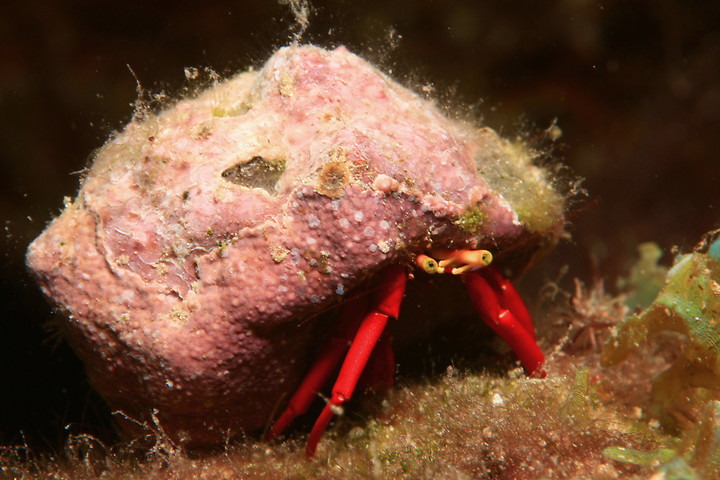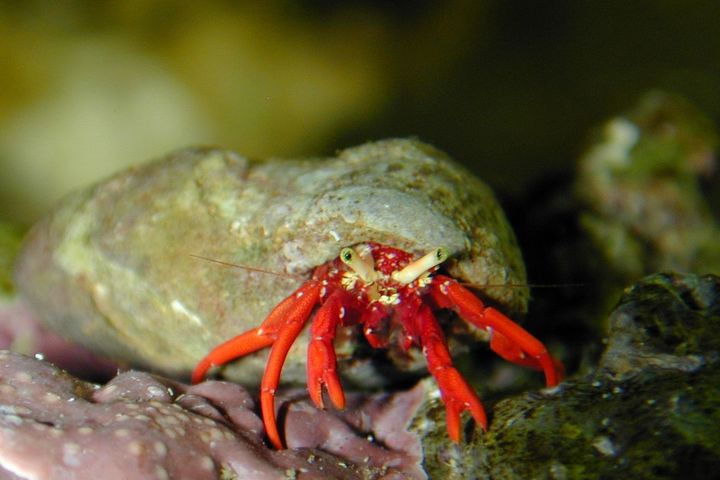Paguristes cadenati


| Latin name | Paguristes cadenati |
|---|---|
| Local name | Scarlet hermit crab |
| Family | Paguroidea - Paguristes |
| Origin | The Mexican Golf |
| Max length | 4 cm (1.6") |
| Minimum volume |
50 l (13 gal) |
|---|---|
| Hardiness |
Hardy |
| Suitable for aquarium |
Suitable for most aquarium |
| Reef safe |
Always reef safe |
| Aggressiveness | Mostly peaceful but might be aggressive towards similar species |
| Recommended |
Macroalgea (Eg. seaweed / nori) Microalgea (Eg. spirulina) |
|---|---|
| Mostly |
Detritus Small crustaceans (Krill, mysis, artemia...) |
A good many of these hermit crabs can exist in the same aquarium, but they will kill each other without insufficient space and/or food.
Count therefore on about 40 gal (150 liters) each, if one desires several in one tank.
Hermit crabs can be lots of fun, but are not particularly useful in the tank.
They are generally easy to keep, but not all species are algae eaters, some eat mostly zooplankton off the rocks.
Remember that they require new shells to grow.
James W. Fatherree. 2010. Aquarium Invertebrates: Crabs in the Marine Aquarium - Advanced Aquarist - (English)
Ronald L. Shimek. 2004. Marine Invertebrates (PocketExpert Guide) - TFH Publications / Microcosm Ltd. - (English)
Bob Fenner. Crabs For Marine Aquariums? Part 1, Part 2, Part 3 - Wet Web Media - (English)

